
Rediscovering Japan

Rediscovering Japan
Travel (Tokushima)

by tomizuta
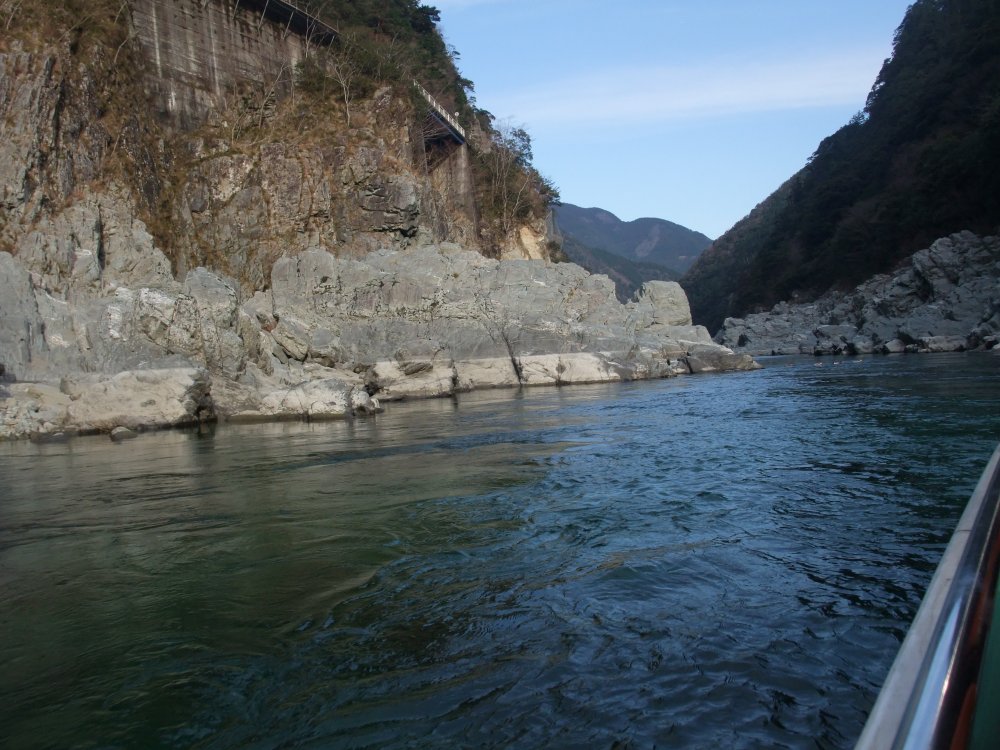
Upstream of Yoshino River in west Tokushima
We went on a 3 day trip to Tokushima in
Shikoku, the smallest of the four main islands constituting Japan. Shikoku, means 4 countries. The name comes from the 4 areas that compose Shikoku. Awa(now Tokushima prefecture), Tosa(
Kochi), Iyo(Ehime) and Sanuki(Kagawa). This was our first visit to Tokushima. Our main interest was to visit Mima, famous for its still maintaining many
Edo period houses with their magnificent Udatsu, Oboke-koboke one of the most picturesque valleys in the Shikoku Mountains, gScarecrow Villageh Nagoro, and the whirlpools of Naruto.
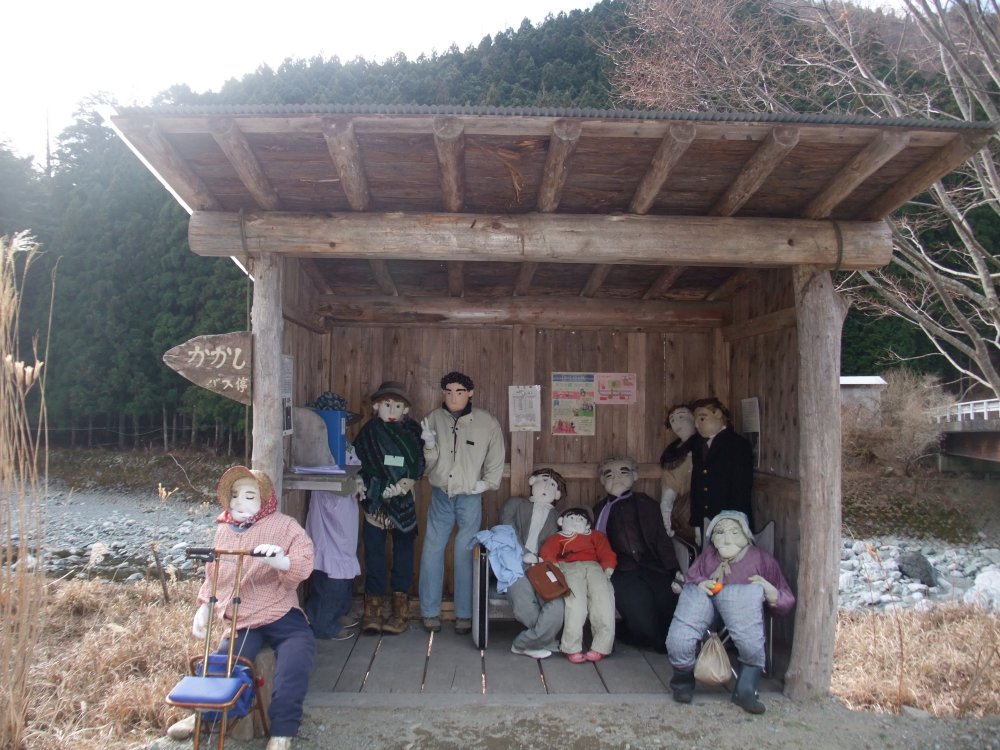
The famous scarecrows of Nagoro village at the village bus stop
The old town district of Wakimachi in Mima city has been designated as
an Important Preservation District for Groups of Historic Buildings. We
walked through the main street, which has houses owned largely by wealthy
Ai (blue dye produced from the Ai plant) merchants from the Edo and Meiji
Eras.
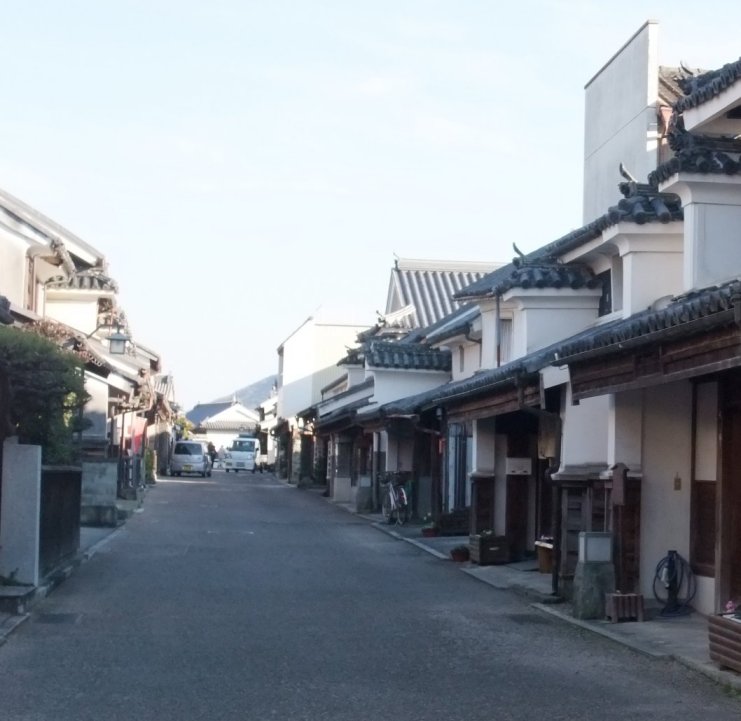
The main road in Mima. Notice the Udatsu on the right
It should be noted that prominent merchants were located facing the main
roads to attract customers the most. Typically the shop was at the front and the owners lived in the back. The shops were built
next to each other with very little space in between. These shops are called Machiya. Fire spreading from
a neighbor was an inherent risk in a row of crammed shops facing the main road.
Udatsu is usually erected
on the second floor, as fire tends to spread at second floor level rather than
the first.
As usual, I entered a liquor shop and asked for some local Sake. An elderly
lady shopkeeper, told me that there no longer are any Sake breweries nearby.
I bought a medium bottle of Udatsu no agaru Sake (raised Udatsu Sake),
which is made by a brewery further east. I found the Sake smooth and palatable,
best slightly chilled if possible.
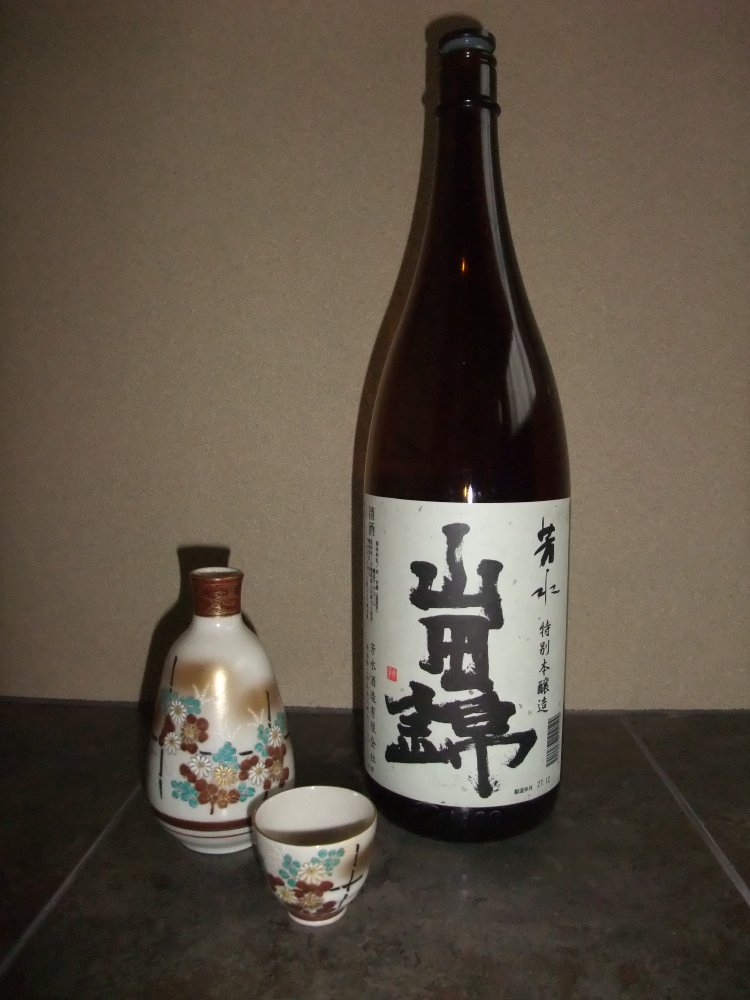
1.8 litre bottle of Housui special honjozo, brewed in Miyoshi city
We stayed at an
Onsen(hot spa) hotel in Oboke-Koboke, which is about 40 miles west of Tokushima
city.
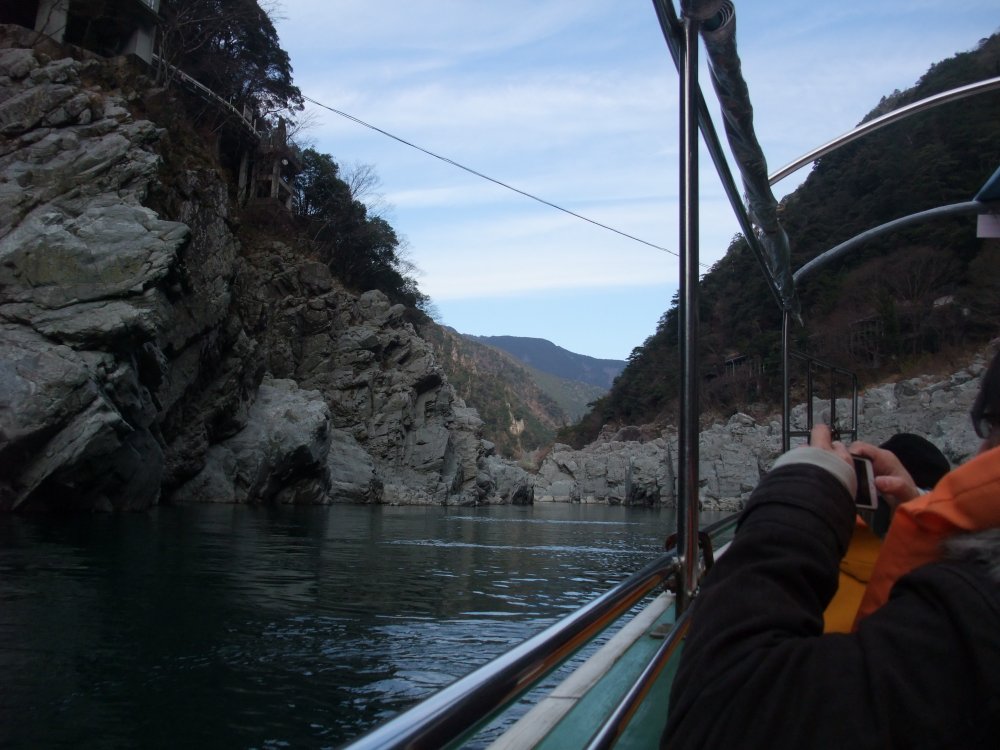
On a boat cruise from Oboke-Koboke
In order to appreciate this area, one needs to know about the battle between
the Minamoto family (Genji) and Taira family (Heiji) in the 12th century. Both families are descendants of emperors in the 9th century, and their seizing power is regarded as the rise of the Samurai
families. In the 10th
century, it became increasingly difficult for the emperorfs government in Kyoto
to fully govern the whole of Japan.
It was a Heiji family led by Kiyomori Taira that first gained a strong
foothold in the emperorfs court. He would marry his daughters to the imperial
family, a very traditional method to gain power.
Kazurabashi is a 45
metre vine made bridge over the River Iya.
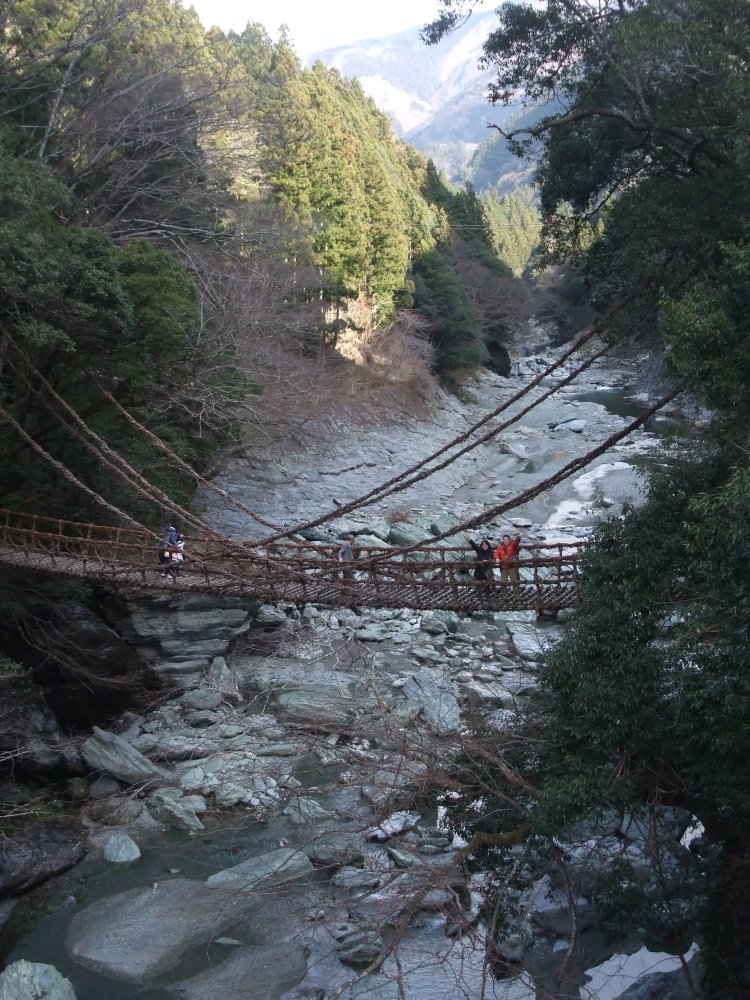
Kazurabashi in Iya
It is regarded as one of the 3 oddest bridges in Japan, the other two being
Kintaikyou in Yamaguchi prefecture and Saruhashi in Yamanashi prefecture.
Legend says that the Heiji that fled into the Iya Mountains made them so
that they could cut it off whenever the Genji came on a pursuit. You need to pay 500 yen to cross the bridge in one direction only, but
the view of the Iya valley below and the experience itself is worth the
money.
East of Kazurabashi
lie the scattered houses of the Ochiai district.
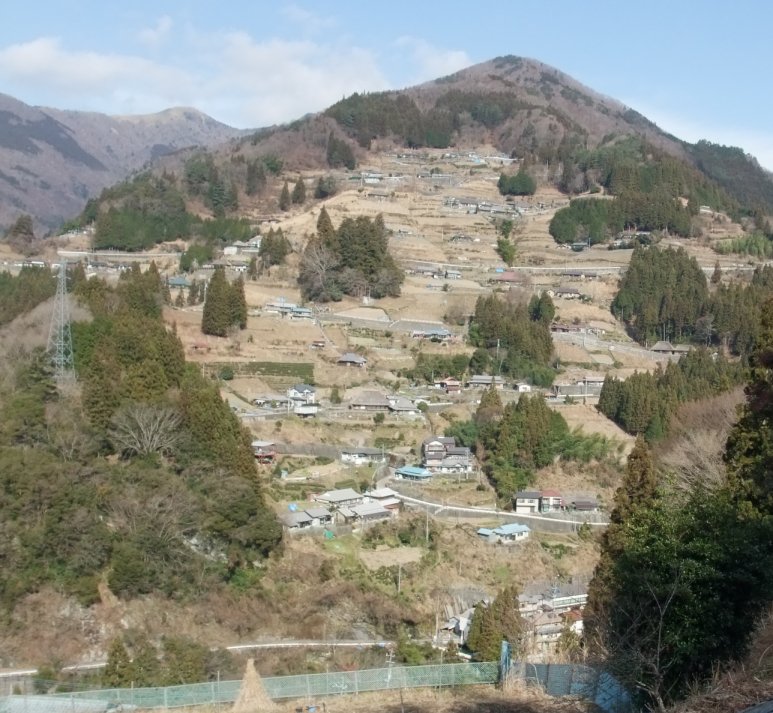
View of Ochiai scattered village
A lady going up the hills asked where we had come from, and thanked us
pleasantly for visiting the place. Such contact is rare for the Japanese
that tend it is politer not to approach and converse with strangers. But
generally in the Iya district, we found the people to be so warm towards
visitors.
If you are travelling in and out of Tokushima Airport, one place you should
not miss is the beautiful Japanese garden of Tokushima castle. The castle itself was dismantled in the Meiji era as were so many castles,
but the gardens have been left intact and maintained by Tokushima City.
It is adjacent to
Tokushima Castle Museum, and you can enter the gardens only for a modest 50 yen
entrance fee.
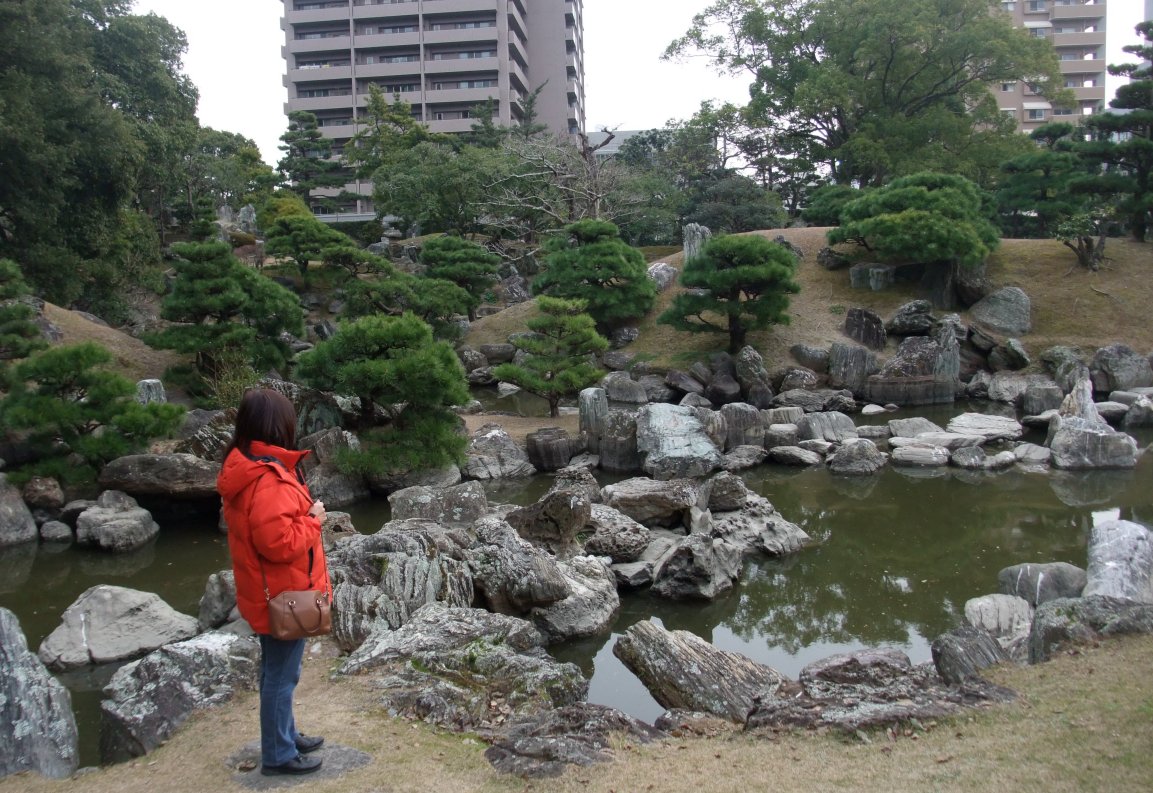
Inside the gardens of Tokushima Castle